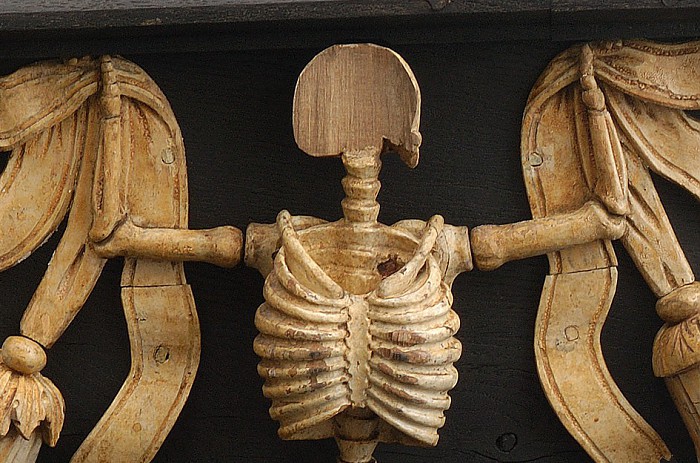

7. November 2004 – 16. January 2005
Coffins from four centuries
In Cooperation With the Funeral Company Ahorn-Grieneisen
Without coffins we would know less about faith and superstition, about the grief and hope of past generations. Coffins tell of poverty and wealth, of the fear of revenants but also of the confidence beyond death. Coffins are like a picture book. They are practical, symbolic, artistic, and nowadays designers also try to give earth furniture an appropriate form and shape. The exhibition trilogy aims to shed light on the manifold aspects of coffin culture: Coffins from the past and present, miniature and viewing coffins as well as eccentric models from England. Customs – Art – Design – these are the keywords.
Coffins are iconographic and epigraphic documents of the first order. Tombs and graves are documents of family and ruler's history. And there is the funeral furniture of the people, which are not called coffins, but rather chests or drawers of death. If the deceased even enter the the earth with a coffin at all, they are simple, exclusively functional coffins. However, they are often left to decay. An exception here is the folding coffin, also called a savings coffin. It is equipped with a folding mechanism which opens the floor by pulling a lever. The corpse then falls into the grave and the coffin is available for reuse.
Among the most impressive coffins in the exhibition are not only the colorful coffins from the family crypt of the von Stockhausen family in Trendelburg and a coffin from the von Münchhausen family in Moringen with free-standing plastic decorations, but also plain coffins, including a rare example of a basket coffin from Thuringia. Between convention and art, a coffin from the beginning of the 20th century is worthy to be mentioned – with the finest art nouveau decor: contemporary and at the artistic height of its time.
The presentation is enriched by numerous graphic sheets, paintings, models and coffin accessories. In its complexity the exhibition offers a reflection of man's attitude towards dying and death in the course of the centuries. And last but not least, the coffins show the great differences of a social differentiation between necessary functionality and a pronounced need for representation.
Arbeitsgemeinschaft Friedhof und Denkmal e.V.
Zentralinstitut für Sepulkralkultur
Museum für Sepulkralkultur
Weinbergstraße 25–27
D-34117 Kassel | Germany
Tel. +49 (0)561 918 93-0
info@sepulkralmuseum.de








